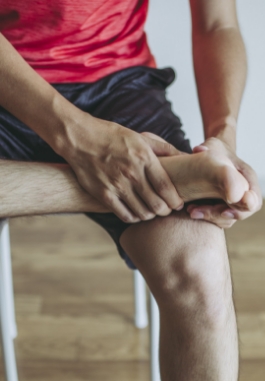Complex Regional Pain Syndrome

What is complex regional pain syndrome (CRPS)?
- Complex regional pain syndrome (CRPS) is an illness that is described as having pain for longer and in excessive amounts compared to what is normal
- Typically after an injury to an arm or leg.
- Although it sometimes improves on its own, there are instances where the condition is chronic and very disabling.
How does complex pain syndrome occur?
- CRPS occurs after an injury to the arm or leg, although the condition has been noted to occur at other parts of the body, albeit more rarely.
- Type I is not related to any nerve injury.
- Type II is correlates to the same area of nerve damage.
Who is prone to CRPS?
- Women are afflicted more than men
- Peak affected age is 40
- Rare in children or the elderly
What is the outcome of Complex regional Pain Syndrome?
- Variable outcomes
- Most recover over time, occasionally taking years
- Some correlation with recovery of the injured nerve
- CRPS can lead to long-term disability if not treated early
- Young children and teenagers as well as the elderly tend to recovery
- Young adults and middle aged adults tend not to do as well
- Smoking, diabetes and a history of chemotherapy as well as some autoimmune conditions can affect healing and recovery
What are the complications of CRPS?
- The bones and muscles weaken and the joint will become painful or stiff, making it hard to move or walk
- The skin, hair and nails become discoloured, the area becomes swollen
- As the muscles become tightened for a prolonged period, the hands or feet cane become permanently deformed
How do we prevent CRPS?
- Early physiotherapy and mobilisation and treatment
- High dose Vitamin C
How can we treat CRPS?
- Physiotherapy and exercise to prevent stiffness and contractures, and to prevent detrimental changes in the nervous system
- Occupational therapy to aid the patient in coping with the condition and living as normally as possible
- Psychotherapy to manage the anger, anxiety and depression, as well as the negative thoughts that perpetuate CRPS
- Medications:
- Amitriptyline and Nortriptyline
- Duloxetine and Venlafaxine
- Gabapentin and Pregabalin
- Lignocaine patch and Capsaiccin
- Opioids
- NSAIDs and Etoricoxib, Celecoxib
- Targeted injections
- Pain procedures:
- Sympathetic nerve blocks
- can be very effective in some patients
- Pulsed radiofrequency of the dorsal root ganglia
- Seeks to ‘reset’ the abnormal sensitivity of the nerve
- Can be done as a day procedure
- Spinal cord stimulation
- A more permanent solution where an electrode and battery pack is placed in your body
- Intrathecal pumps
- For those who require high doses of opioids but are unable to tolerate their side effects
- Others:
- Acupuncture
- Mirror-box therapy and graded motor imagery
- Intravenous immunoglobulin
Use "Up" and "Down" arrows to move between options
Click the right arrow to expand children, left arrow to collapse.
 0
0




